14 Popular Types Of Mushrooms And What To Cook With Them
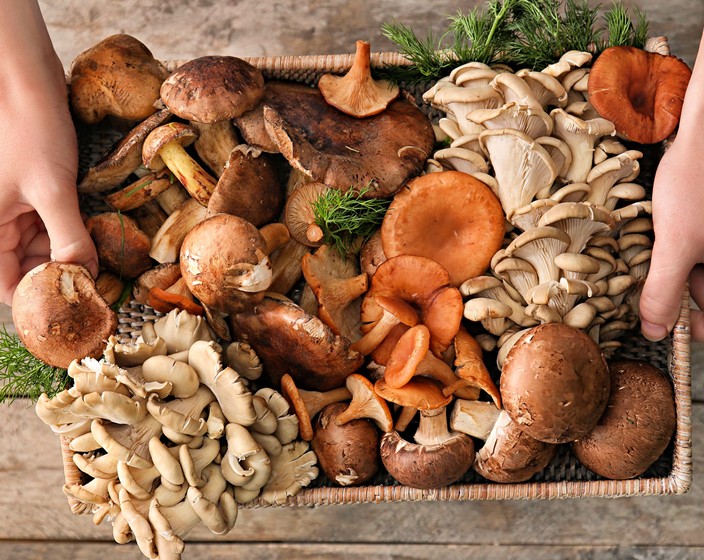
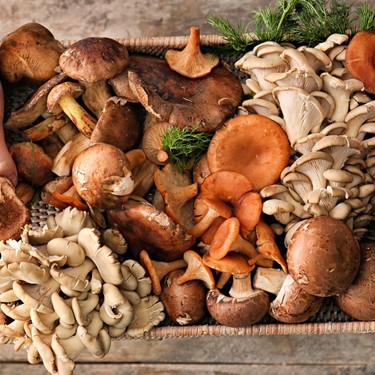


Mushrooms are a genuinely fantastic ingredient! They are full of umami flavor and meaty texture, all while being low in calories and full of fiber, vitamins, and minerals.
They are versatile ingredients used in many dishes, from soups and stews to pasta, pizza, and burgers. They are also an excellent meat substitute and are universally loved by vegetarians and vegans everywhere.
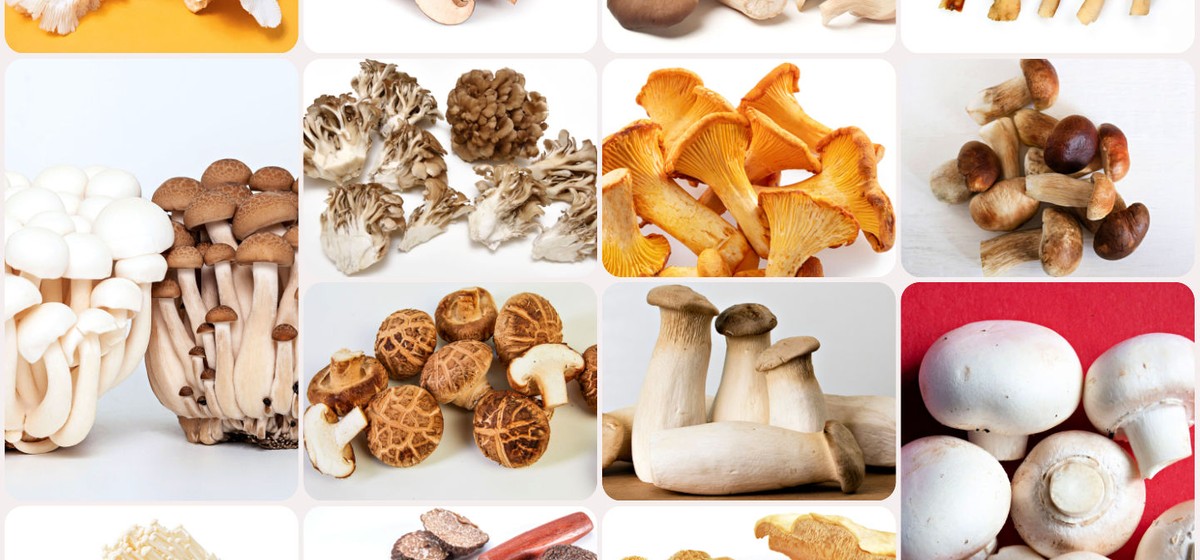
How many different types of mushrooms do you think exist? To say a few would be an understatement! There are more than 10000 mushroom varieties out there.
There is no time to go through all of them, and we will not dive into the poisonous types either. But let's break down 14 of the most popular types of mushrooms that you can find in grocery stores and farmers' markets.
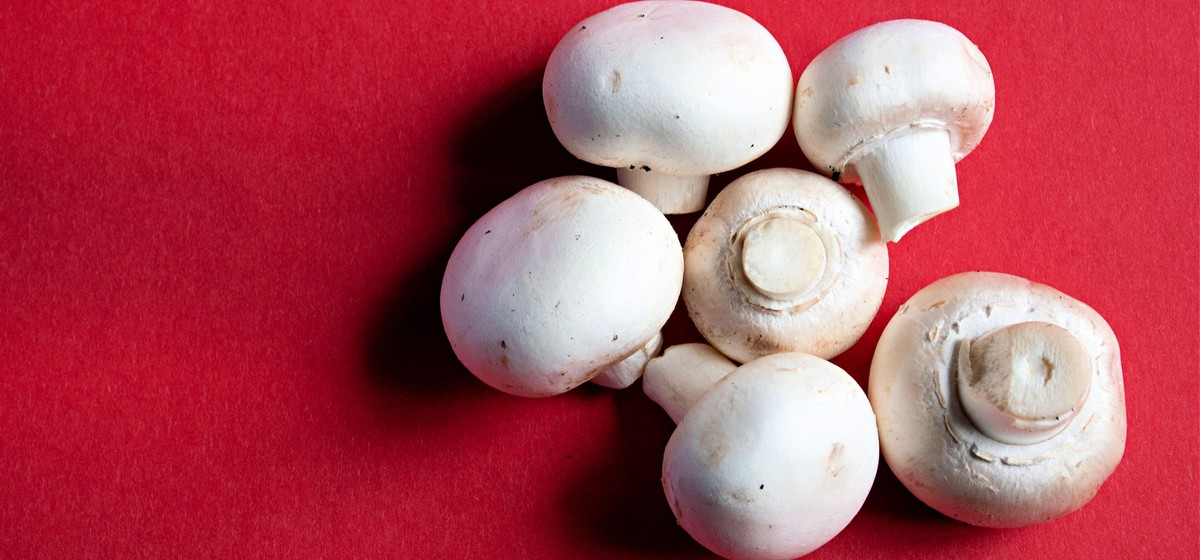
Also Known As: Agaricus Bisporus, Champignons, Common mushrooms.
These are the most common type of mushrooms that are the youngest of the Agaricus Bisporus variety, which also includes creminis and portobello.
White button mushrooms are the most popular type worldwide and are often used in soups, sauces, and sautés but can also be eaten raw in fresh salads. They have a mild flavor and a soft texture.
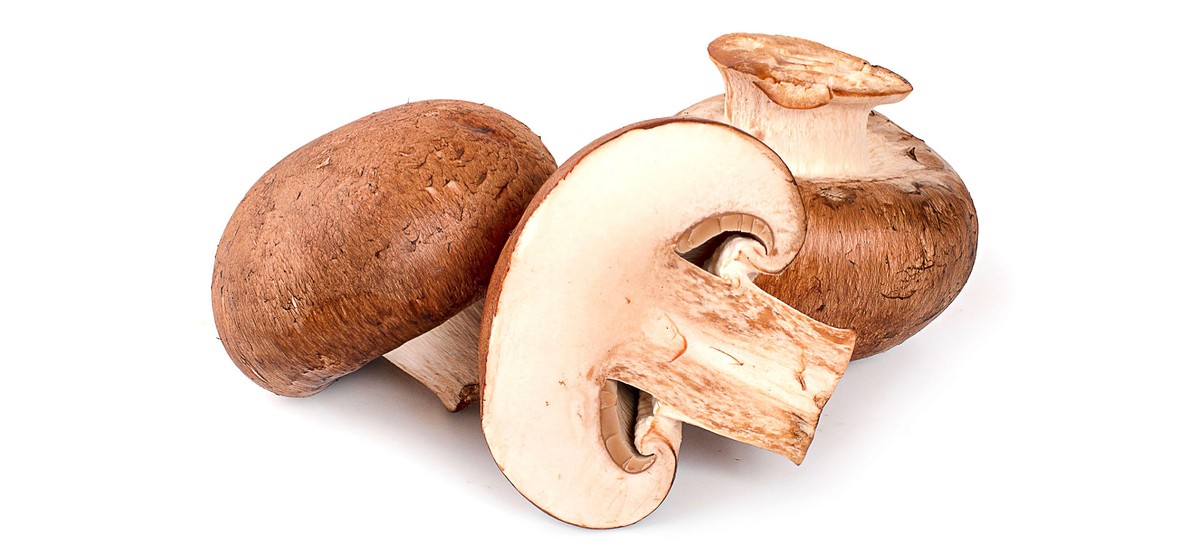
Also Known As: Agaricus Bisporus, Baby Bella, Baby Portabello
Creminis are a slightly older sibling of button mushrooms. They belong to the same variety of Agaricus bisporus and are harvested when they are a bit more mature.
Cremini mushrooms have brown caps and a firmer texture; they also have a deeper earthy flavor and usually cost more than button mushrooms. Yet, you can replace creminis with white buttons and vice versa in most recipes.
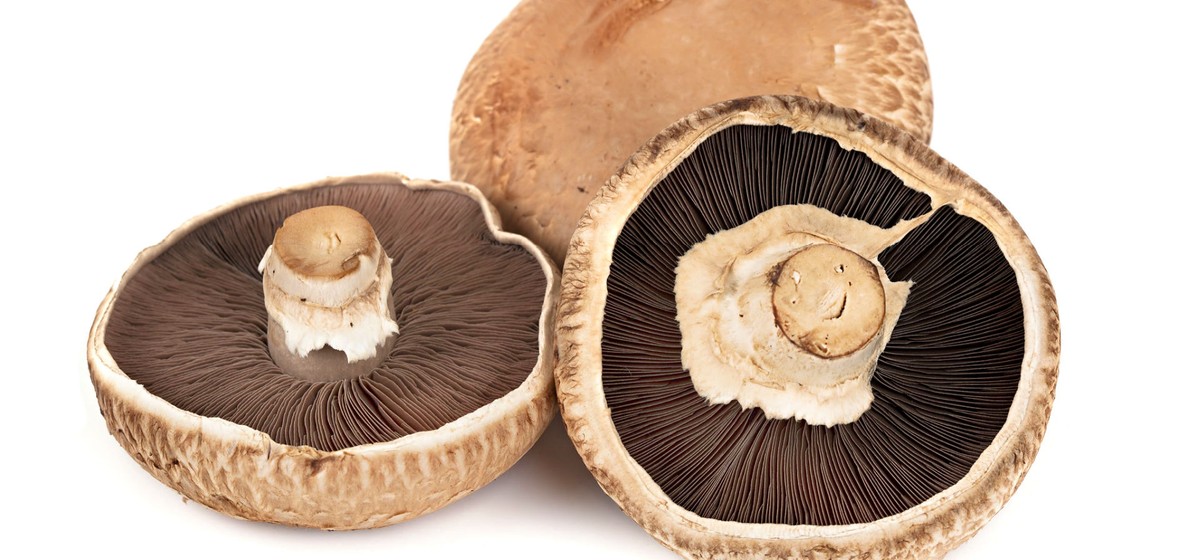
Also Known As: Open Cap Mushroom
Portobellos are the most mature version of the Agaricus bisporus species; they are the bigger older brother of white buttons and creminis. They have very dark brown to black caps with very thick stems. They are meaty and have a rich flavor, making them perfect for grilling, broiling, and roasting.
Portobellos are also fantastic meat substitutes in vegetarian and vegan dishes. Their size and meaty flavor make them perfect to act as a burger pattie, a vegetarian pizza topping, or even a carb-free burger bun.
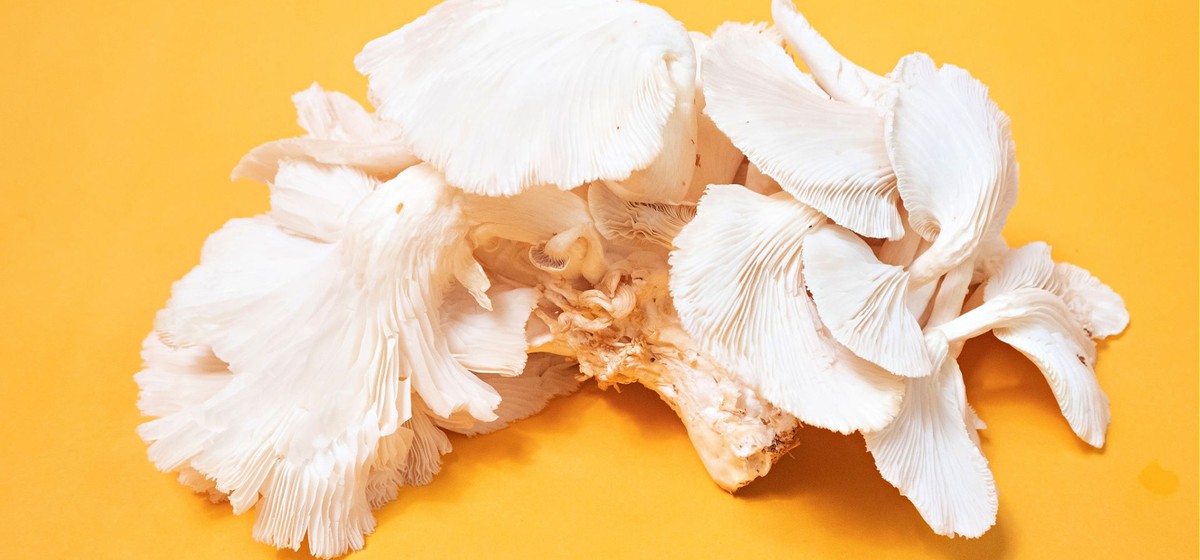
Also Known As: Pleurotus Ostreatus, Tree Oyster Mushrooms, Pearl Oyster Mushrooms
Oyster mushrooms get their name for their oyster-like shape. Their color can range from white to cream to light tan or grayish-blue, and they grow in clusters.
The younger the oyster mushrooms are, the more flavorful; they taste slightly sweet and nutty with hints of anise. Their texture is quite different from other types of mushrooms; they are delicate, paper-thin, and almost fragile but become tender, chewy, and meaty when cooked.
Oyster mushrooms are a popular ingredient in vegetarian dishes and taste fantastic when battered or fried.
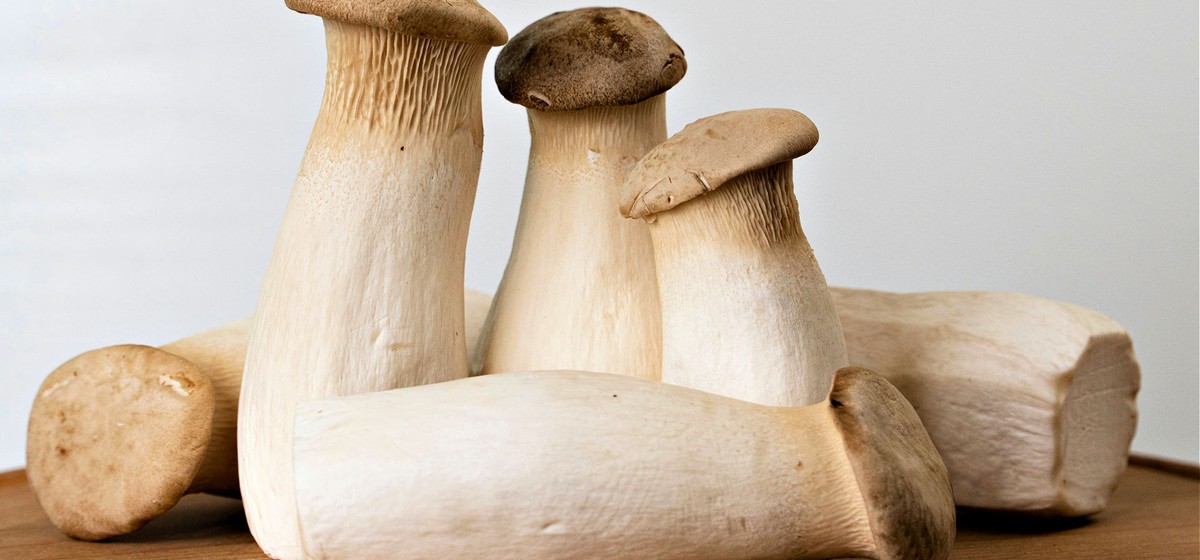
Also Known As: King Oyster Mushroom, French Horn Mushroom, King Brown Mushroom, Trumpet Royale
King Trumpet Mushrooms are often referred to as king oyster mushrooms as they belong to the same family of Pleurotus and are the largest of the species. Yet they look and taste quite different. King oyster mushrooms are much larger with long, thick, smooth meaty stems and stout brown caps. Unlike oyster mushrooms, they don’t cluster but grow separately.
Raw king trumpets have little flavor, but they become savory, meaty, and chewy when cooked, absorbing the flavors of the ingredients and spices around them. They are the number one meat substitutes among the mushroom variety, and you should treat them like you would a nice cut of meat - roast, grill, sautee, or fry.
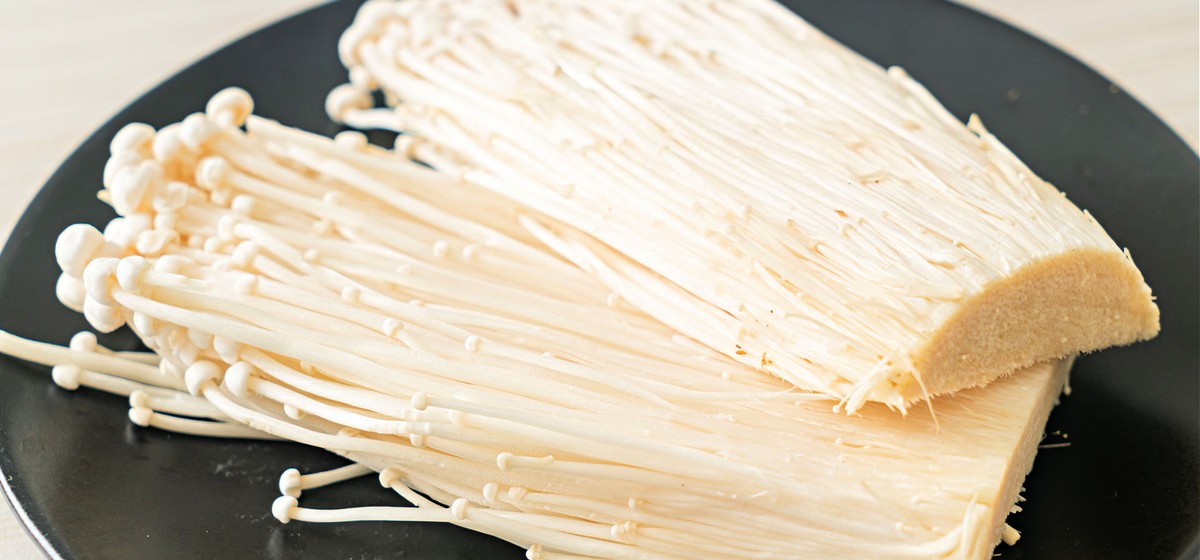
Also Known As: Flammulina Filiformis, Enokitake, Golden Needle Mushrooms, Lily Mushrooms
Enoki mushrooms are also called golden needles for their long thin shape. They are delicate and have a mild flavor with a slightly crunchy texture. They grow in bundles and need to be separated and washed before cooking. Because of their tender, almost fragile surface, it can be tricky to clean them.
To clean enoki, you should cut off the root and gently separate them into smaller bundles first; place them in a bowl and run under cold water, then drain and carefully pat dry with a kitchen towel.
You can eat them raw or cooked. Enoki mushrooms are very popular in Asian cuisine and are common in soups and salads but can also be stir-fried or grilled.
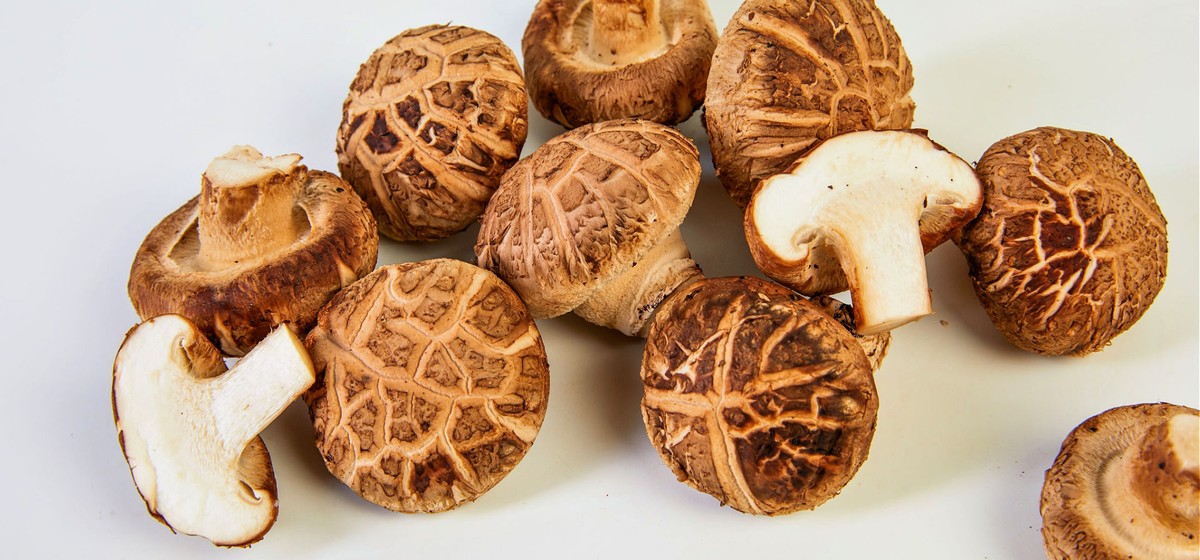
Also Known As: Lentinula Edodes, Sawtooth Oak Mushroom", Black Forest Mushroom, Golden Oak Mushroom
Shiitake mushrooms are native to East Asia and have been cultivated for over 6000 years. They have long slender stems and a slightly curved umbrella-like brown cap.
Shiitake caps (stems are pretty tough and often discarded) are often used in Asian cuisine and are one of the most potent umami-rich ingredients. When cooked, they have a smoky, deep earthy flavor and soft meaty texture.
Dried shiitake mushrooms are very common in Japanese and Chinese cuisine.
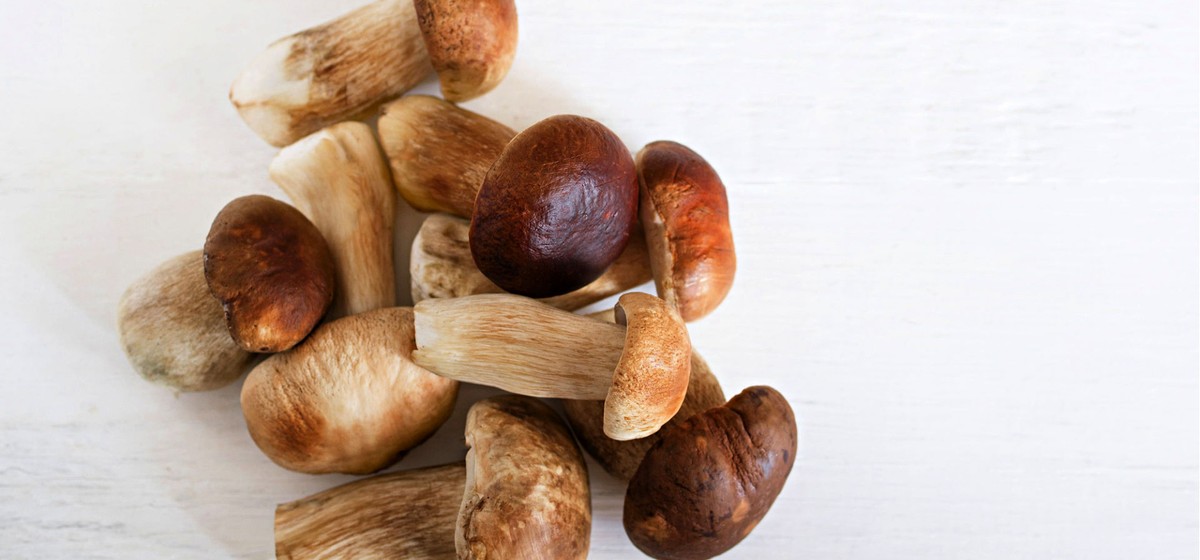
Also Known As: Boletus Edulis, King Bolete, Cèpe, Steinpilz ("stone mushroom" in German), Penny Bun
Porcini means "piglets" in Italian and are the most beloved mushroom in Italian cuisine. They have long meaty white stems and reddish-brown caps that are slightly sticky to touch. They are quite large mushrooms with an incredibly robust nutty flavor and intense aroma.
Fresh porcinis are considered gourmet mushrooms - they are not easy to find and can be pretty pricey. You can often find them dried, and they are also very flavorful. Porcinis are most commonly used in brown sauces, risottos, and pasta—their luscious unmistakable flavor pairs well with pancetta, anchovies, and garlic.
You shouldn't eat raw porcini mushrooms. One of the proteins in raw porcini is indigestible by humans and can irritate one's stomach. Another reason to cook porcini before eating is that their thick spongy stems often are homes for worms. Even though the worms are harmless, you should examine the mushrooms for small holes when selecting them.
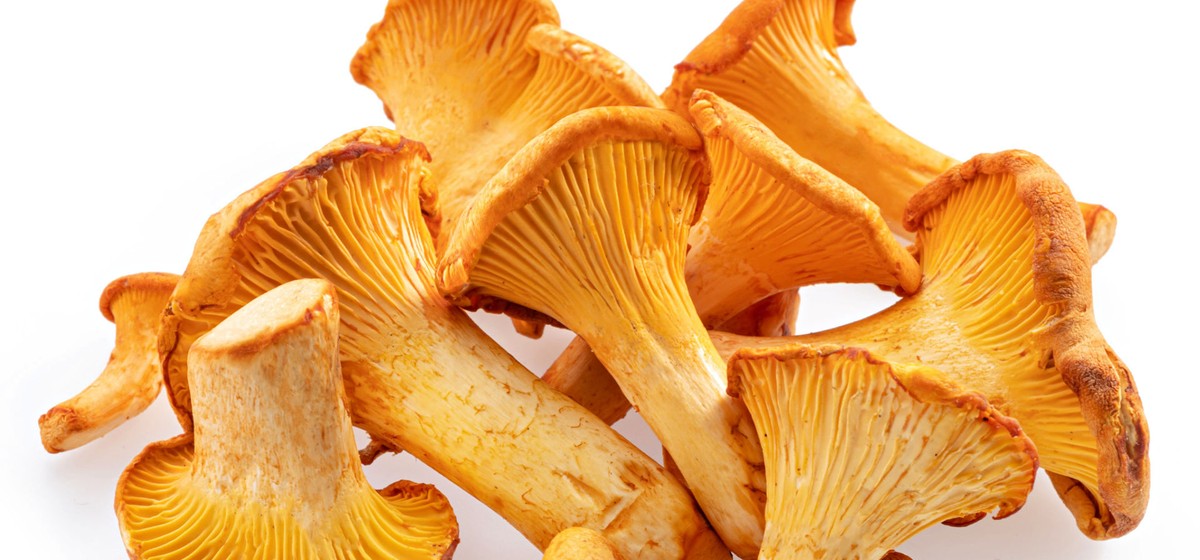
Also Known As: Cantharellus Cibarius, Golden Chanterelle, Girolle
Chanterelles are one of the world's most popular types of wild mushrooms. They are mycorrhizal, meaning they form a symbiotic relationship with the roots of trees. Chanterelles vary in size and color - they usually come in shades of orange and yellow and are unmistakable for their slightly inverted fan or trumpet-like shape with gills running up the stem and under the cap.
They are famous for their rich earthy flavor, sweet fruity aroma, and delightful, slightly chewy yet firm texture. You can have chanterelles raw when available or use the simplest cooking methods to retain the most of their naturally delicious flavor.
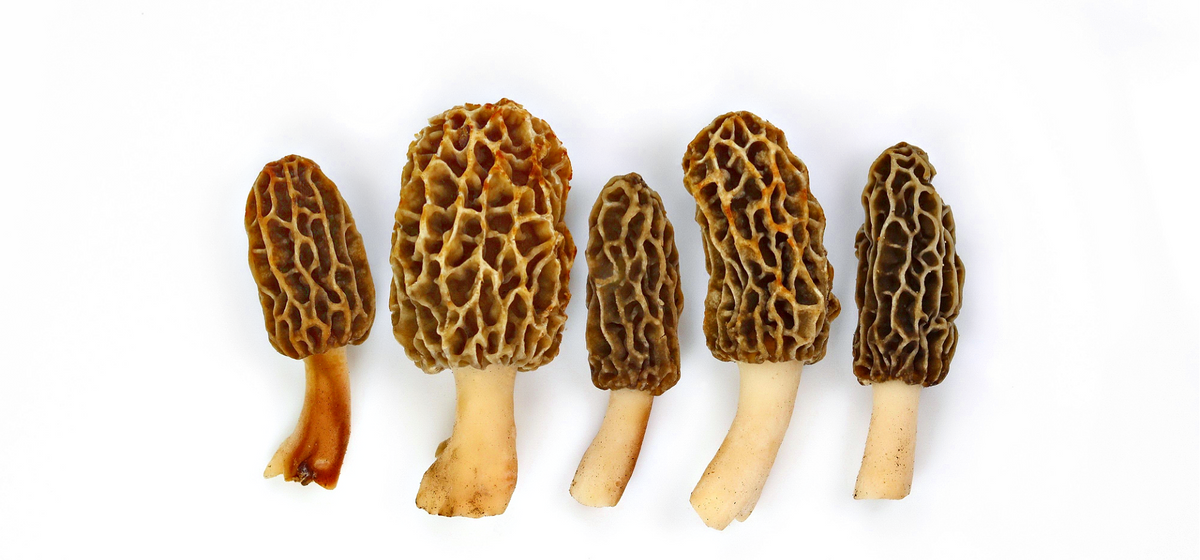
Also Known As: Morchella Esculenta, Molly Moocher, Haystack, Dryland Fish
Morels are popular in French cuisine and are considered a gourmet mushroom. Morels only grow in the wild, making them one of the most sought-after and desired ingredients among chefs, foodies, and mushroom enthusiasts.
Morels have a unique honeycomb-like appearance with a hollow stem. They often grow close to oak, elm, ash, and aspen trees and often appear in disturbed areas after a fire.
Morels are pretty controversial. On the one hand, they are praised for their unique flavor, often called one of the finest-tasting mushrooms on Earth. On the other hand, raw morels can be highly toxic and poisonous to humans.
You should only eat thoroughly cooked morels and avoid consuming them with any type of alcohol to be on the safe side, as morels contain small amounts of hydrazine toxins, which can cause nausea and irritate the stomach.
Their flavor is earthy, nutty, and slightly fruity with a hint of bittersweetness. Morels go well in rich cream sauces, soups, and sautés.
If you were lucky to get some morels, try making this exquisite Farro Risotto With Morel Mushrooms And Asparagus
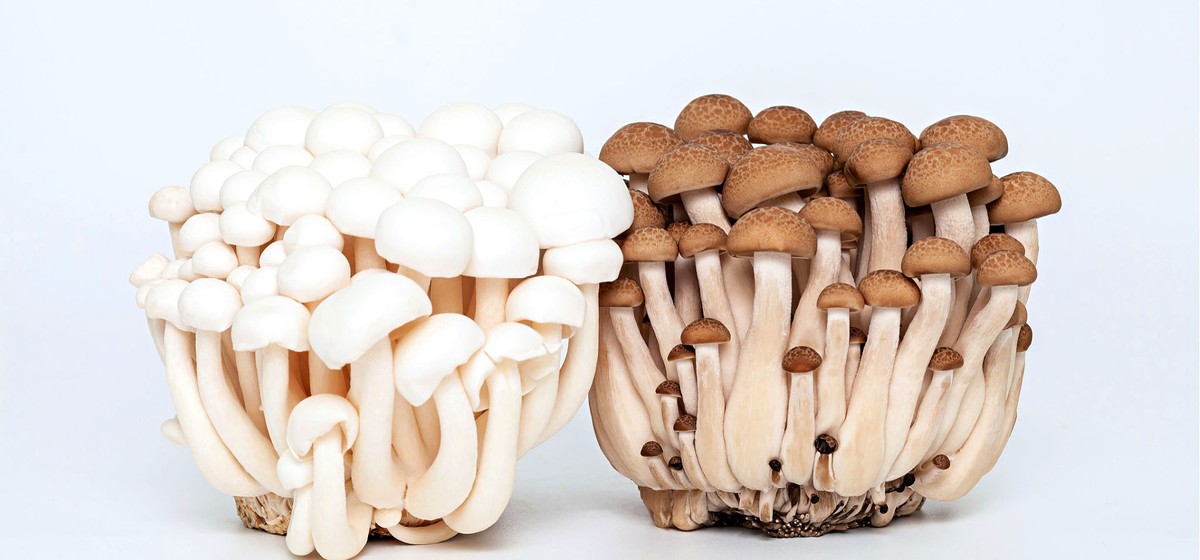
Also Known As: Lyophyllum Shimeji, Clamshell
Beech mushrooms are native to East Asia and most commonly grow in the wild under beech trees in Japan, where they get their name. Beech mushrooms vary in size, shape, and color - they have long slender stems and small round caps.
White Beech is the most popular variety; it has a crunchy texture and a delicately mild flavor, both satisfyingly sweet and nutty when cooked. They can be consumed raw and are not poisonous, but they don't taste pleasant and are quite bitter.
Beech mushrooms work well in soups, stews, stir-fries, or sauces and maintain their crisp texture even when cooked.
Try this Winter Melon And Shimeji Mushroom Soup.
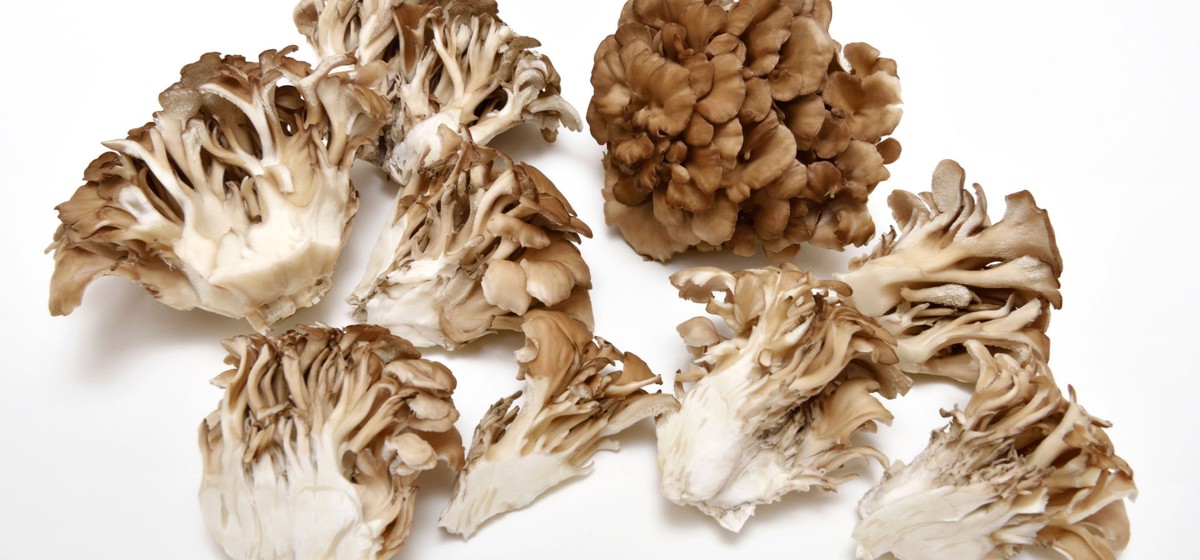
Also Known As: Champignon Dansant, Dancing Mushroom, Grifola, Hen of the Woods, King of Mushrooms, Monkey's Bench
Maitake is a cluster-type mushroom popular in Japan. "Maitake" means "dancing" in Japanese, and the mushroom claims to get its name after people danced with happiness if they managed to find it in the wild.
It has a distinctive appearance; it looks like a cluster of ruffled fan-shaped caps attached to a thick stem.
This mushroom is also known for its health benefits and is widely used in supplements and traditional medicine. Maitake is rich in Vitamin D, known to reduce blood pressure, lower cholesterol, and boost immunity.
Maitake's flavor is rich, peppery, and earthy. Try it with this Szechuan Tofu With Sticky Rice And Ponzu Veggies recipe.
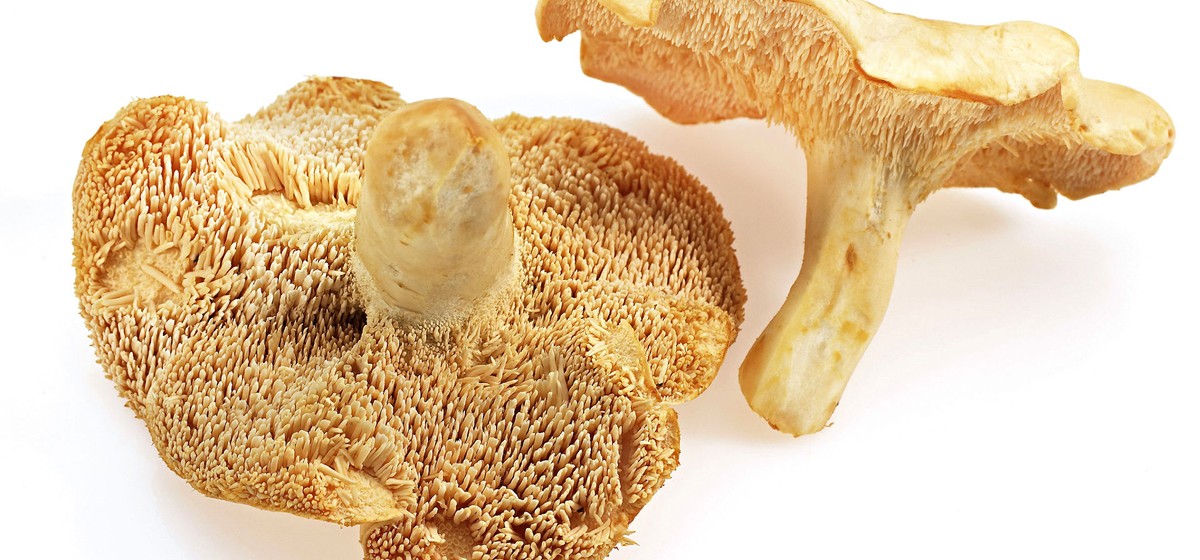
Also Known As: Hydnum Repandum, Sweet Tooth
Hedgehog mushrooms are small gilled mushrooms and look similar to universally praised chanterelles. It gets its name from the spines or "teeth" on the underside of their caps that resemble hedgehog's spines. Hedgehog mushrooms come in different shades - from white to salmon pink.
This mushroom is one of the most delicious fungi in the wild, with a somewhat sweet nutty taste and peppery aftertaste. Hedgehog mushrooms taste best when they are young and fresh. They can be used in any dish where you would use chanterelles - sautés, soups, sauces, and stews.
Try using them in this scrumptious Wild Mushroom Ragout
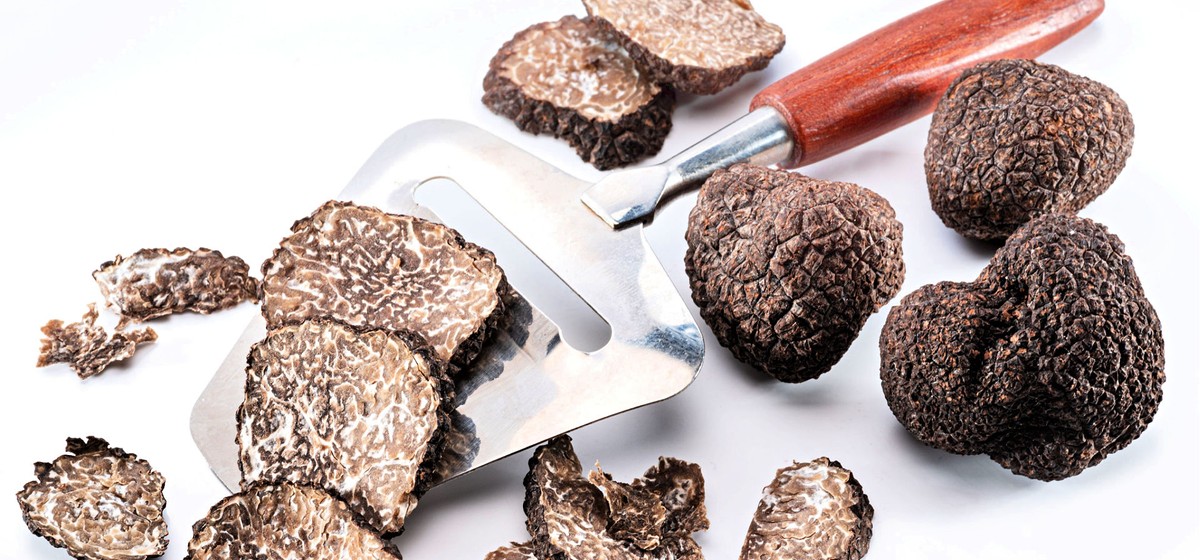
Also Known As: Tuber Melanosporum, Fragrant Diamond', Black Pearl, Shadowy Lady, Underground Empress
Truffles don't need much introduction. They are the most exquisite and expensive types of mushrooms in the world. They have a distinctive appearance - they look like small black or white potatoes with irregular shapes. Truffles grow underground near tree roots and are found using truffle pigs or dogs as they can smell them.
Truffles are spicy and musky, with their aroma as strong as their taste. They are one of the most potent umami agents - They are often used as a flavoring or seasoning agent, and only a small amount is needed to impart their flavor to a dish.
Truffles can be eaten raw and shaved over any dish you want to add some rich gamey flavor. You shouldn't cook truffles as heat will damage their taste and aroma.
Enjoy the flavor of this unique mushroom in Baked Crispy Truffled Fries or shave some truffle over this Jumbo Scallops With Wild Mushroom Risotto.